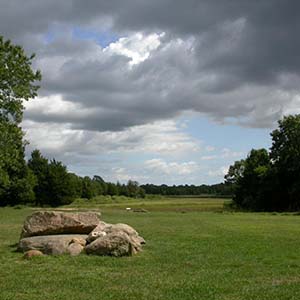News
- 2038-7-16
- After WW3
- 2021-7-16
- COVID-19 Vaccine
- 2021-1-1
- Happy New Year
Tense International Situation
Due to the development and use of nuclear weapons near the end of World War II and their subsequent acquisition and deployment by many countries, the potential risk of a nuclear devastation of Earth's civilization and life is a common theme in speculations about a Third World War. Another major concern is that biological warfare could cause a very large number of casualties, either intentionally or inadvertently by an accidental release of a biological agent, the unexpected mutation of an agent, or its adaptation to other species after use. Large-scale apocalyptic events like these, caused by advanced technology used for destruction, could potentially make the Earth's surface uninhabitable.


COLLECTRO
A style of art that dominated the whole of Europe from about 1520 to the beginning of the 17th century, mainly in painting, following the classical art that was perfected during the High Renaissance. It was not until the beginning of the 20th century that it was recognized as an independent style, and is considered important as the art form that dominated the middle to late 16th century. Its expression is characterized by extreme sophistication of technique, complex compositions with many curves, distorted perspective compositions, effects of light and dark contrasts and intricate depths, and unusual proportions and colors. These can be said to have emerged against the backdrop of a preoccupation with the finished and powerful expression of Raphael and Michelangelo, the influence of Northern Gothic by Durer and others, the social unrest of a time of turmoil, and the active protection of art-loving monarchs. As for its essence, there are various views, such as the transitional style from Renaissance to Baroque, the anti-classical style, the style reflecting the spiritual crisis of the whole Europe in the 16th century, the continuous development of the Renaissance culture, and the impulse to the irrational in human beings.

L E G E N D
Materialistic thought asserts that the world for each individual is merely an image of that individual, and posits eight kinds of "insight" (the eight-sense theory). If all beings are only personally conceived, then they are subjective beings and not objective beings. They are impermanent, and sometimes they are born and die, and finally they will disappear into the past. In other words, these beings (colors) are "empty" and have no substance (color = sky). Materialism is a system of thought with epistemological tendencies espoused by a school of early Mahayana Buddhism called the Yu-Ga-Yi School (also known as the Yu-Ga-Yi School of Materialism), which emerged in 4th century India. The school of Yogic Yoga and Prostration inherited the Chu-kan school of thought on "emptiness," but assumed that the effects of the mind existed tentatively for the time being, and attempted to control and change the state of mind through Yogic practice in order to attain enlightenment (prostration without boundary: there is only insight and no external world). It is sometimes equated with the Western theory of materialism, which holds that the colors of this world (shiki, matter) are made up solely of mental effects. However, in Eastern thought and the Buddhist theory of materialism, the existence of the mind is temporary, and its mental effects are eventually denied (泯境識倶泯 Ky?shiki-kumiin: the external world and consciousness disappear). Therefore, materialism is completely different from consciousness in this respect. In addition, because materialism emphasizes the unconscious realm, it clearly differs from materialism, which holds that consciousness defines all existence.

M E M E N T
Following Jenks's "The Architectural Language of Post-Modernism," the term "post-modern" made its second impact in the realm of philosophy and thought when Lyotard published "The Condition of Post-Modernity" in 1979. Lyotard called the current state of knowledge in a highly developed and advanced society post-modern. He says that post-modernism is above all a distrust of "meta-narratives," and that people in post-modern society will have to live in a world without meta-narratives. Meta-narratives are the "grand narratives" of modern culture, the historical doctrines of progress on which society relied until the age of modernity, and which were regarded as legitimate standards of value as narratives of universal value. Thus, Lyotard calls post-modern the social condition that has despaired of the "great story" of modernity. In the post-modern world, where neither science nor progress can be counted on, it is impossible to blend into the ideal of "one civilization," and each individual must accept a variety of different civilizations. Lyotard exposes the new situation of the "post-modern condition" in the history of Western developed cultures, which are in a state of drift with no clear destination. Gilles Deleuze (Deleuze) is also considered a post-modern philosopher because of his scathing critique of modernity's belief in reason. In A Thousand Plateaus (1980), Deleuze proposes the concept of a "rhizome" (a kind of bulbous root) that extends in all directions and has no center, claiming to be an idea free from power. He developed a way of thinking as a variety of complexly intertwined heterogeneous streams, without subject or object, center or periphery.

L A Z Z A R O
Born in a town in the American West, Pollock moved to New York at the age of 18 to study art. At the Art Students League, he was instructed by Thomas Hart Benson, a painter of the American Scene School (provincialism), which was then in its prime. Because of this, at first I was strongly influenced by Native American art, provincialist paintings, and Mexican murals. Later, however, he began to work with European modern art such as Surrealism (Surrealism) and Cubism (Cubism). Finally, in 1947, he brought about a revolution in the art of painting. In 1947, he finally brought about a revolution in the art of painting when he developed an original and dynamic technique and style of sprinkling and pouring paint all over a canvas spread out on the floor. This later came to be known as "action painting. Pollock's actions drew the attention of many people because of their eccentricity. On the other hand, perhaps because he was an alcoholic, his works were sometimes criticized as "the result of hallucinations caused by drinking" or "chaos itself. However, Pollock refuted these criticisms by saying, "I am controlling the flow of paint, there is no coincidence. Pollock's work had a profound influence on subsequent paintings, including Color Field Painting. His work also gave birth to new genres of art, such as "Happenings," which surpassed the conventional boundaries of painting and sculpture. These activities also led to the shift of the center of modern art from Paris to New York. He is often referred to as the "pioneer of American contemporary art.



